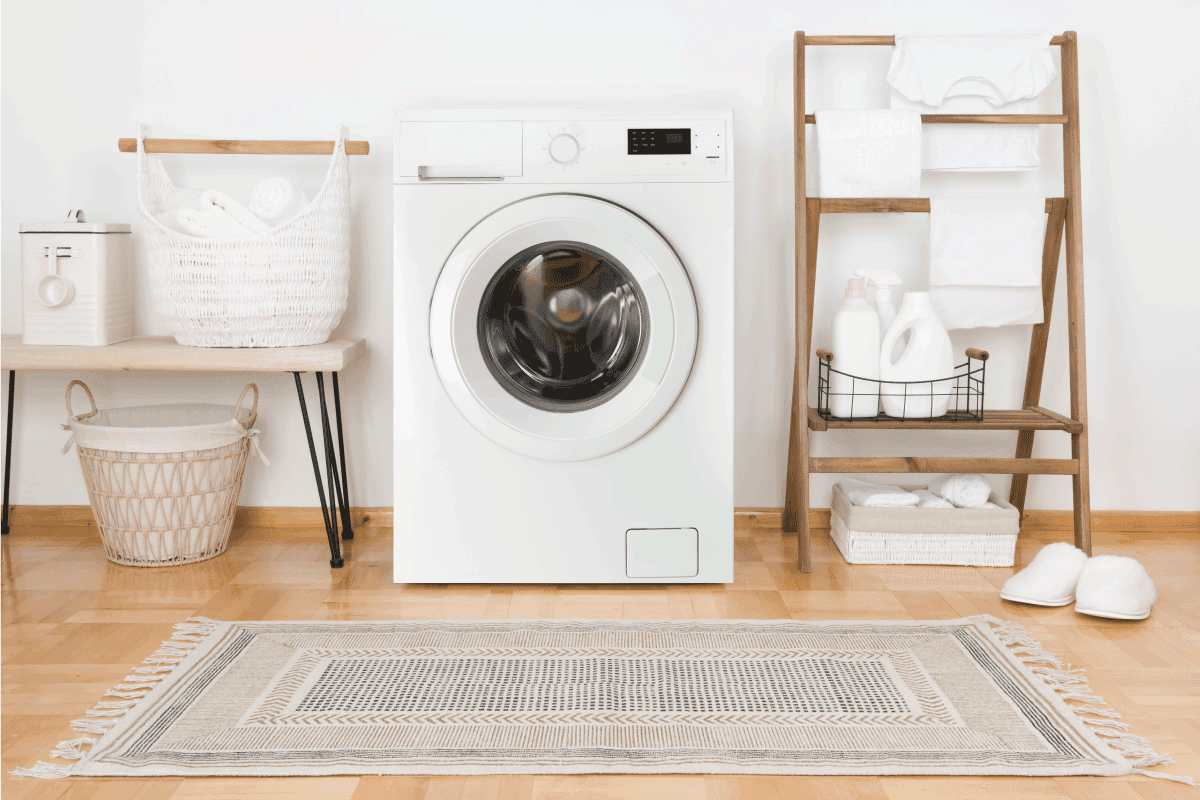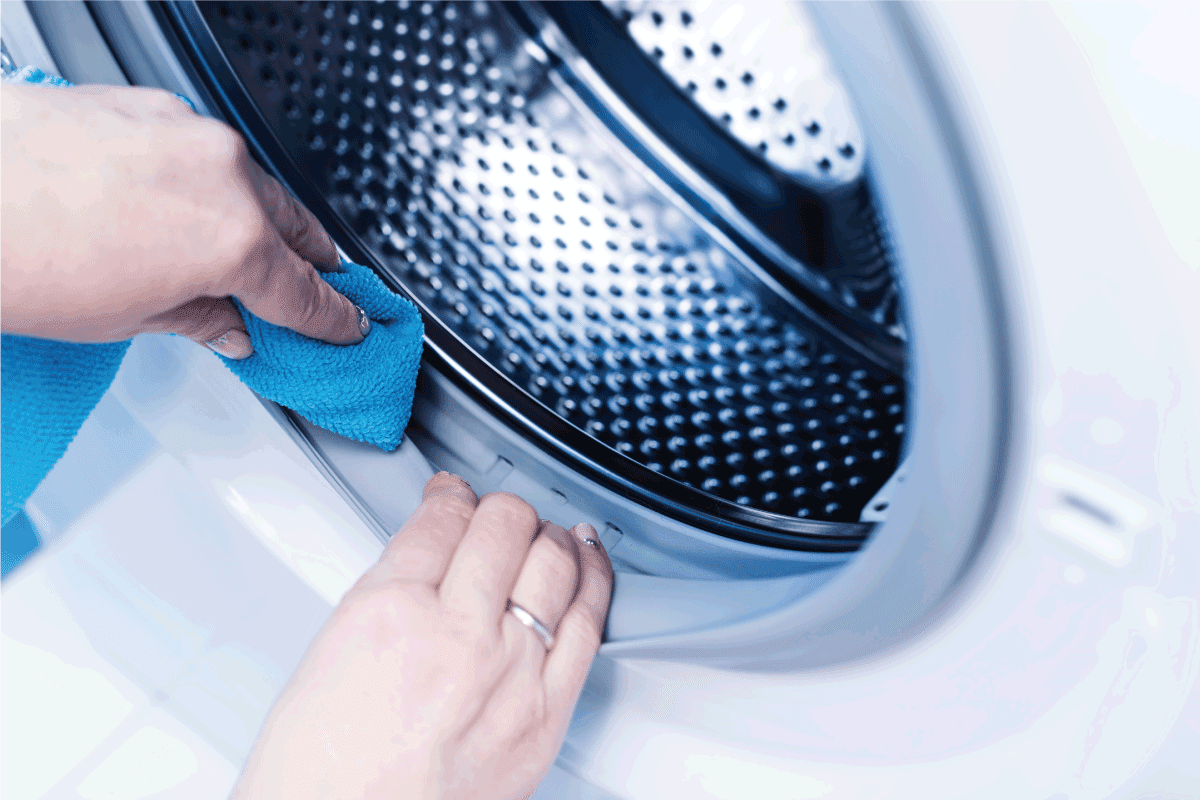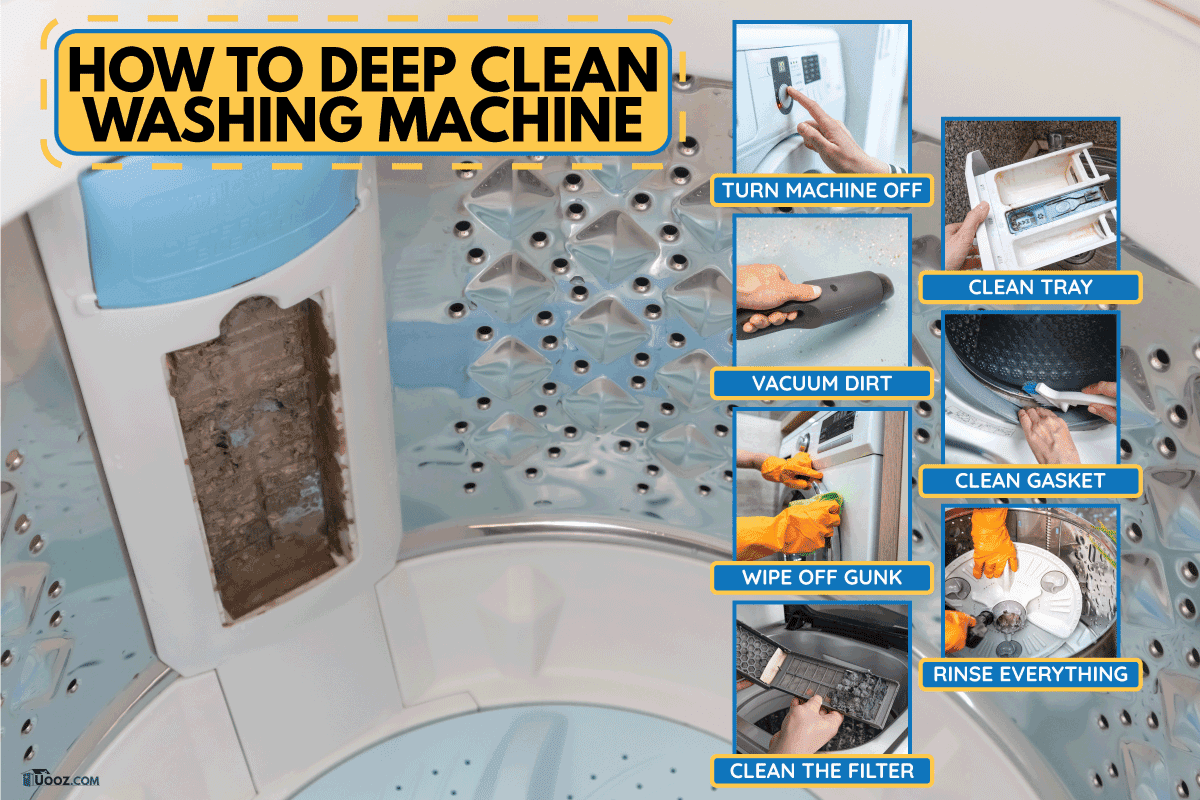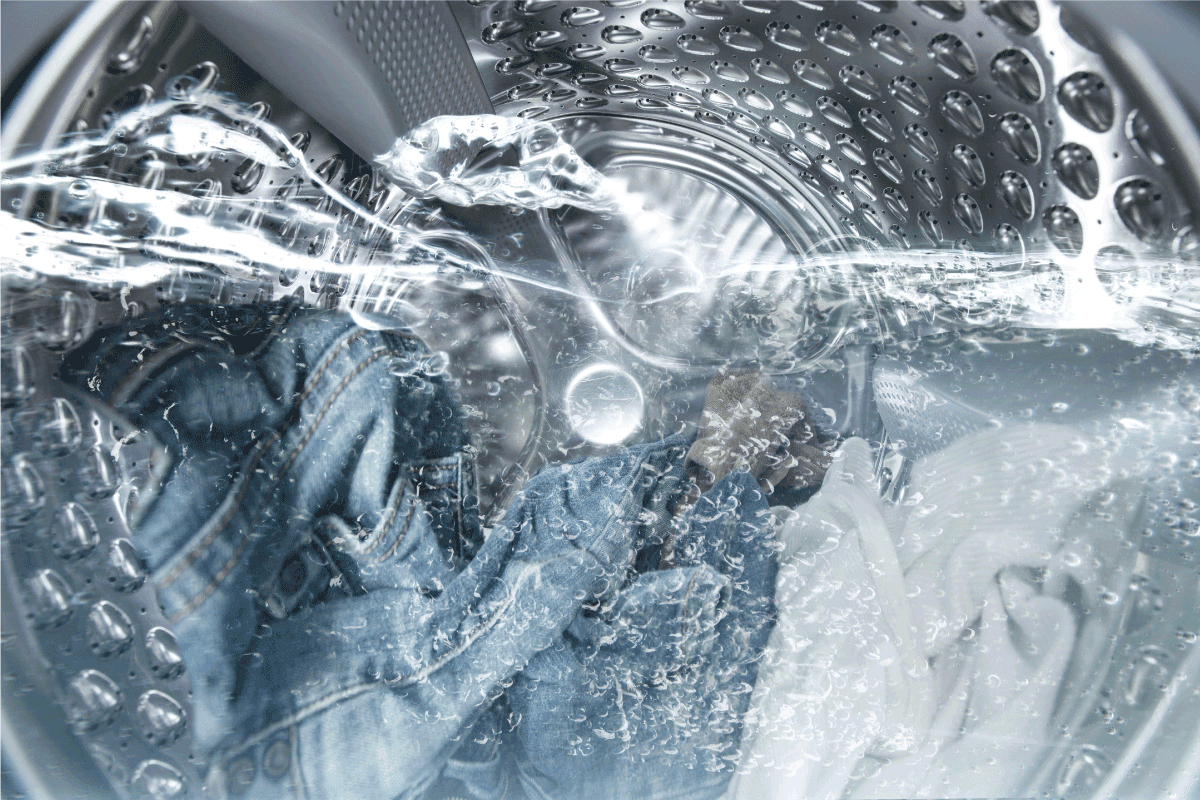A washing machine often only works as efficiently as it can if it’s clean. But how can you clean the appliance, especially if you don’t have or don’t want to use vinegar and baking soda? We researched this concern for you to give you the following answer.
Different methods are available for you to take advantage of to help you clean your washing machine without vinegar and baking soda. Some of these methods are:
- Use bleach
- Use hydrogen peroxide
- Use soda crystals
It’s important to do these procedures correctly. That way, you won’t run into problems when you use the washing machine. So continue reading as we talk about these cleaning techniques in greater detail.
How Do I Clean My Washing Machine Without Vinegar And Baking Soda?
Before applying any routine cleaning and maintenance techniques to your washing machine, ensure that you prepare yourself for the job. Some of the safety measures you need to follow are:
- Don’t open the washing machine’s door or lid if it’s still running. Also, don’t turn off the appliance if it’s still going through a cycle.
- Allow the washing machine to cool for a few minutes before touching it if it has run a hot water cycle recently.
- Warn household members and guests of the cleaning operation that you’re about to do. Otherwise, place a warning sign next to the cleaning site to prevent accidents and injuries.
- Wear a respirator, goggles, and safety gloves, especially if you’re going to handle harsh cleaning chemicals.

After making the necessary preparations, you can use the following techniques to clean your washing machine without using vinegar and baking soda:
Method #1: Use Bleach
Warning: Only use the appropriate amount of bleach. Also, avoid long-term exposure to this product because of its corrosive nature.
What You’ll Need
- Spray-on bleach
- Paper towels
Step-by-Step Guide
- Spray the washing machine’s drum with bleach.
- Set the appliance to a quick rinse setting with hot water of at least 140 degrees Fahrenheit.
- Leave the machine to rinse its drum for about 18 minutes.
Check out this product on Amazon.
Watch the video below for a visual representation of the steps mentioned above:
Method #2: Use Hydrogen Peroxide
Hydrogen peroxide is a chemical compound with cleaning properties. If used on surfaces, this solution helps in removing bacteria, fungi, viruses, and other unclean microorganisms.
Follow these steps to use this product to help clean your washing machine:
What You’ll Need
- Hydrogen peroxide
- Microfiber cloth
- Scrubber brush
Step-by-Step Guide
- Apply some hydrogen peroxide to a clean microfiber cloth.
- Wipe the washing machine until clean.
- Spray hydrogen peroxide on a scrubber brush.
- Use the scrubber brush to clean hard-to-reach areas in the washing machine.
Check out this product on Amazon.
Method #3: Use Soda Crystals
Also called "washing soda," soda crystals (sodium carbonate decahydrate) is a product with reasonably powerful cleaning properties. Its multi-purpose cleaning characteristics can help remove unclean substances from your washing machine, including dirt and grease.
After purchasing soda crystals, use the following guide to clean your washing machine with that product:
Step-by-Step Guide
- Add two cups of soda crystals to your washing machine.
- Add 1/2 cup of soda crystals into the dispenser drawer or tray and mix it with 2 cups of hot water.
- Set the appliance to run a long and hot wash cycle.
Check out this product on Amazon.
At this point, you might also find it interesting to know if you can run a washing machine with only cold water. You can read our post on that subject matter to know the answer to that concern.
How Do I Deep Clean My Washing Machine?
Aside from routine cleaning, deep cleaning a washing machine generally provides long-term results. Plus, the process helps remove dirt, debris, and gunk buildup that your regular cleaning efforts couldn’t remove.

So here are the steps to deep clean your washing machine:
What You’ll Need
- Vacuum cleaner
- All-purpose cleaner
- Mold and mildew cleaner
- Scrubber brush
- Clean cloth or paper towels

Step-by-Step Guide
Step #1: Turn Machine Off
Turn off the washing machine before anything else. Unplug its socket from the outlet. Otherwise, switch off its power from its connected circuit breaker if the appliance’s cord is behind a wall.
Step #2: Suck Up The Dirt And Debris
Use a vacuum cleaner to remove visible dirt and debris around the outer areas of the washing machine. Take advantage of different head attachments for your vacuum cleaner if you can. Also, you might need to move the appliance out of its original location to remove dirt buildup from underneath.
Step #3: Wipe Off Gunk
Spray water on a cloth or paper towel. Then, use it to wipe off leftover gunk that the vacuum cleaner couldn't remove.
Step #4: Clean The Filter
Place a towel next to the filter enclosure. Next, remove the emergency drain to gain access to the filter. Place the drain hose next to a drain pan to let the leftover water escape from the machine. Then, dispose of the water in the drain pan properly.
Remove the filter from the washing machine afterward. Next, rinse the gunk buildup from the filter under the faucet. Spray a bit of all-purpose detergent onto the filter to remove some of the hard-to-remove filth. Then, you can use a scrubber brush to scrub the leftover gunk from the component.
Rinse the filter again, and you can use hot water for this part of the procedure. Set the filter aside temporarily, and let it air dry.
Step #5: Clean The Dispensing Tray
Pull the dispensing tray out of the washing machine. Then, spray a light bleach coating onto this assembly to remove mold and mildew. Wipe off the residue with a clean cloth or paper towel. Rinse the dispensing tray under lukewarm or hot water afterward before letting it air dry.
Next, spray a bit of bleach onto another clean cloth or paper towel. Use that piece to clean the dispensing tray’s receptacle in the washing machine.
Step #6: Clean The Rubber Gasket
Spray some mold and mildew cleaner with a scrubber brush. Then, use that cleaning tool to scrub the mold, mildew, and other filthy residues from underneath and around the rubber gasket.
Step #7: Rinse The Washing Machine
Wait for at least 30 minutes to allow the mold and mildew cleaner to set and dry. Once that period is over, close the washing machine’s opening.
Then, turn on the appliance and set it to a quick wash setting. You can follow the machine's automatic features if it sets the time for this feature automatically. Otherwise, set the time for the machine to run to about 20 minutes.
Check out this product on Amazon.
Take note that some of the steps mentioned above may not apply to your specific washing machine model. So consult your owner's manual or ask for help from the appliance manufacturer's customer service hotline if you need assistance.
You can also watch the video below for a visual guide to this procedure. It’s also important to mention that the person in the clip uses vinegar and baking soda to remove bacteria from her washing machine. Take note that you can use other solutions mentioned in the previous section as alternatives to these two products.
Don’t forget to test the washing machine after deep cleaning it to check for any mishaps that you might need to remedy. For instance, the appliance’s pressure drops when the machine runs. If so, read our post on why does the water pressure drop when the washing machine is running to know the answer to this particular concern.
When Should I Clean My Washing Machine Drum?
You should clean your washing machine drum at least once or twice every two weeks. If you’re using the appliance frequently, it can be a good idea to apply deep cleaning techniques to it once per month. However, you may still get away with deep cleaning your washing machine once every three months if you’re using it infrequently.
Otherwise, your washing machine may need immediate cleaning if:
- It harms clothing and fabric during each wash cycle.
- The washer reeks of mold and mildew.
- Strange noises are coming out of the appliance as it runs.

Final Words
Remember, you don’t have to use vinegar and baking soda to clean your washing machine. Instead, take advantage of other techniques, such as using bleach or soda crystals. Take note that you should clean and maintain the washer regularly so you won’t encounter problems with it.




